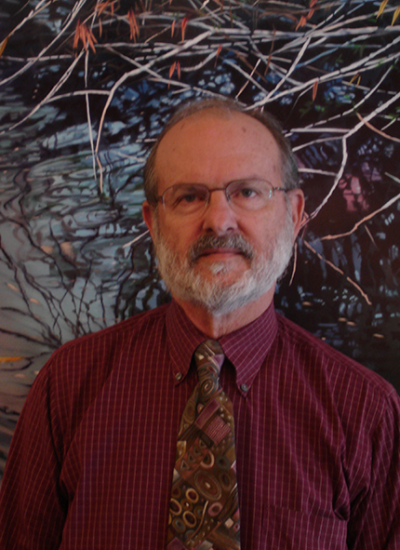Galgiani, J. N., Ampel, N. M., Catanzaro, A., Johnson, R. H., Stevens, D. A., & Williams, P. L. (2000). Practice guidelines for the treatment of coccidioidomycosis. CLINICAL INFECTIOUS DISEASES, 30(4), 658-661.
GALGIANI, J. N., & STEVENS, D. A. (1976). ANTIMICROBIAL SUSCEPTIBILITY TESTING OF YEASTS - TURBIDIMETRIC TECHNIQUE INDEPENDENT OF INOCULUM SIZE. ANTIMICROBIAL AGENTS AND CHEMOTHERAPY, 10(4), 721-726.
FROMTLING, R. A., GALGIANI, J. N., PFALLER, M. A., ESPINELINGROFF, A., BARTIZAL, K. F., BARTLETT, M. S., BODY, B. A., FREY, C., HALL, G., ROBERTS, G. D., NOLTE, F. B., ODDS, F. C., RINALDI, M. G., SUGAR, A. M., & VILLAREAL, K. (1993). MULTICENTER EVALUATION OF A BROTH MACRODILUTION ANTIFUNGAL SUSCEPTIBILITY TEST FOR YEASTS. ANTIMICROBIAL AGENTS AND CHEMOTHERAPY, 37(1), 39-45.
Johnson, S. M., Lerche, N. W., Pappagianis, D., Yee, J. L., Galgiani, J. N., & Hector, R. F. (2007). Safety, antigenicity, and efficacy of a recombinant coccidioidomycosis vaccine in cynomolgus macaques (Macaca fascicularis). Annals of the New York Academy of Sciences, 1111, 290-300.
The safety, immunogenicity and efficacy of recombinant Ag2/PRA106 + CSA chimeric fusion protein (CFP) vaccine in ISS/Montanide adjuvant-administered intramuscular (IM) was assessed in adult female cynomolgus macaques challenged with Coccidioides posadasii. Animals received three immunizations with either 5 microg CFP, 50-microg CFP, or adjuvant alone and were challenged 4 weeks following the final immunization. Although significant antibody response was produced in response to vaccination, there were no discernable adverse effects, suggesting that the vaccine was well tolerated. Upon intratracheal challenge, all animals showed evidence of disease. Two animals that received 5-microg doses of CFP were euthanatized prior to the study's end because of severe symptoms. Animals vaccinated with 50-microg doses of CFP showed evidence of enhanced sensitization compared to adjuvant controls and animals vaccinated with 5-microg doses of CFP. This was based on higher serum anti-CFP titers, enhanced secretion of interferon-gamma (IFN-gamma) from stimulated bronchoalveolar lavage mononuclear cells (BALMC), reduced pulmonary radiologic findings following intratracheal challenge, reduced terminal complement fixation titers, and reduced necropsy findings. Overall the vaccine was well tolerated, induced sensitization, and resulted in a protective response when given at the higher 50-microg dose. Additional experiments may be needed to optimize the vaccination and to confer greater protection against lethal challenge.
Galgiani, J. N., Ampel, N. M., Blair, J. E., Catanzaro, A., Geertsma, F., Hoover, S. E., Johnson, R. H., Kusne, S., Lisse, J., MacDonald, J. D., Meyerson, S. L., Raksin, P. B., Siever, J., Stevens, D. A., Sunenshine, R., & Theodore, N. (2016). Executive Summary: 2016 Infectious Diseases Society of America (IDSA) Clinical Practice Guideline for the Treatment of Coccidioidomycosis. Clinical infectious diseases : an official publication of the Infectious Diseases Society of America, 63(6), 717-22.
It is important to realize that guidelines cannot always account for individual variation among patients. They are not intended to supplant physician judgment with respect to particular patients or special clinical situations. Infectious Diseases Society of America considers adherence to these guidelines to be voluntary, with the ultimate determination regarding their application to be made by the physician in the light of each patient's individual circumstances.Coccidioidomycosis, also known as San Joaquin Valley fever, is a systemic infection endemic to parts of the southwestern United States and elsewhere in the Western Hemisphere. Residence in and recent travel to these areas are critical elements for the accurate recognition of patients who develop this infection. In this practice guideline, we have organized our recommendations to address actionable questions concerning the entire spectrum of clinical syndromes. These can range from initial pulmonary infection, which eventually resolves whether or not antifungal therapy is administered, to a variety of pulmonary and extrapulmonary complications. Additional recommendations address management of coccidioidomycosis occurring for special at-risk populations. Finally, preemptive management strategies are outlined in certain at-risk populations and after unintentional laboratory exposure.


